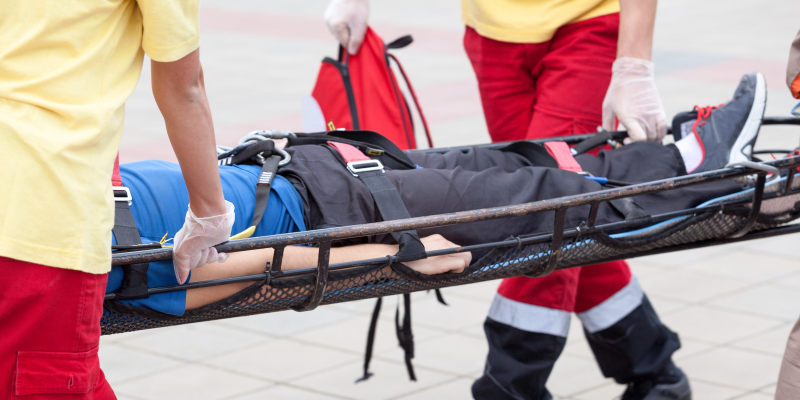
There are many unexpected symptoms that can stem from common traumas and accidents, and individuals often suffer significant airway damage from traumatic events. Around the world, injuries such as car accidents, gunshot wounds and concussions account for over 3 million non-fatal injuries per year. These common trauma scenarios can happen to anyone, and it’s critical that providers and patients understand the airway damage that results from physical trauma.
Causes and types of physical trauma
Physical trauma refers to any serious injury to the body. The two types are blunt force trauma, which occurs when an object or force strikes the body – often resulting in concussions, deep cuts or broken bones – and penetrating trauma, which happens when an object pierces the skin or body, usually creating an open wound.
Traumatic injuries are more serious than everyday cuts, bruises or scrapes – they often require admission to the hospital for assessment, treatment and rehabilitation, and sometimes warrant operations within the first few days of injury. Patients with severe injuries sometimes require intensive care, specialist treatments or transfers to additional hospitals.
How traumas damage the airway
Airway functions can quickly become compromised by various physical traumas, and once the airway is compromised, the severity of the damage can escalate rapidly. When a patient suffers trauma to their neck, such as blunt laryngeal trauma, for instance, they may quickly require emergency intubation or a surgical airway to help them breathe and manage mitigating symptoms of stridor or wheezing. The severity of damage from laryngeal trauma can range from minor vocal cord weakness to fractures of the cartilage structures of the larynx and trachea.
When laryngeal or tracheal fractures occur from trauma, they can lead to the escape of air into the neck and chest, resulting in significant respiratory compromise and sometimes fatal consequences, if not addressed carefully and efficiently.
After suffering blunt trauma, severely injured patients can develop airway obstruction or poor ventilation leading to hypoxia or death within minutes.
The LEMON assessment method
When conducting airway assessments of patients who have suffered physical trauma, providers must perform pre-intubation checks to determine the difficulty of intubation and the status of the patient’s basic neurologic functions. The LEMON mnemonic is a helpful tool for providers to reference when conducting airway assessments. LEMON stands for:
L: Look for visual signals that the airway may prove difficult, such as a broken jaw or loose dental structures. Difficulties also may occur if the patient is obese, has a high arched palate, a short neck or trauma to the face and neck.
E: Evaluate the airway with the 3-3-2 guideline. The mouth should be three fingers wide from top to bottom when open; so too should the space from the hyoid bone to chin. The area between the thyroid notch and hyoid bone should be a minimum of two fingers wide.
M: Mallampati score the airway. A high score increases the likelihood of a difficult airway. If the posterior pharynx is able to be fully exposed, the airway is a 1. A class 2 denotes a partially exposed pharynx. Class 3 means that the posterior pharynx cannot be exposed, but the base of the uvula is visible. Class 4 airways are the most challenging, with no visible posterior structures.
O: Look for airway obstruction, or possible sources of obstructions such as broken teeth.
N: Neck mobility. A patient who is unable to fully move their neck faces a higher risk of injury.
Spinal cord injuries are particularly dangerous. Older patients may have less mobility as well.
The symptoms of physical trauma vary from patient to patient, and so does the impact of trauma on patients’ airway health and functions. To remain prepared for a diverse range of trauma and airway management scenarios, providers must continue to familiarize themselves with different types of traumas and their damage to the airway. Read this blog to learn more about trauma and airway management.














